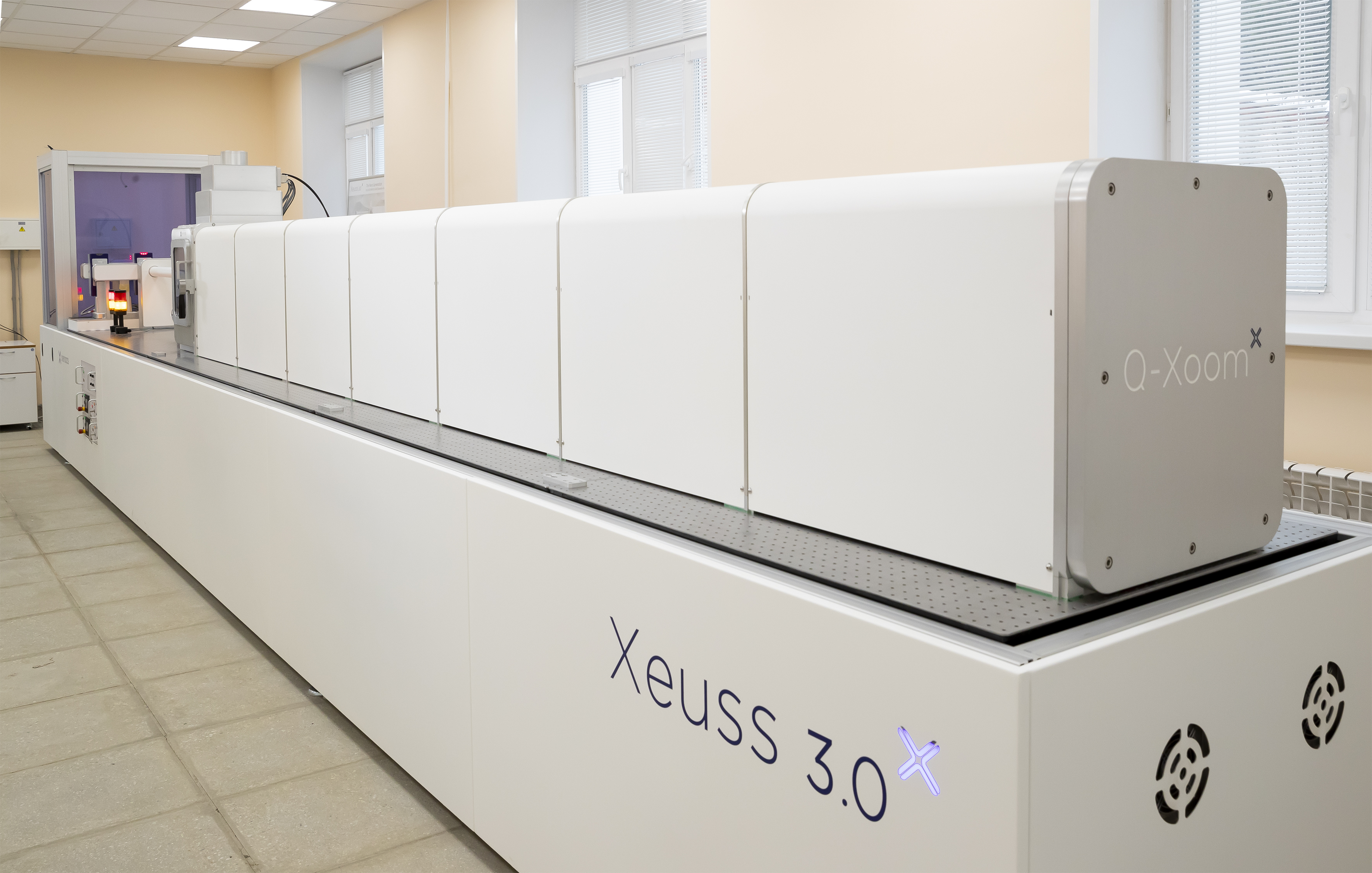New facility of X-ray scattering in FLNP
Media, 29 April 2022
The IBR-2 JINR basic facility is the world’s only research pulsed reactor of periodic action at fast neutrons. It makes the top 5 most “bright” neutron sources in the world. It was put into temporary shutdown mode in October 2021 due to maintenance and repair. Physical experiments at the facility are scheduled to resume only by the autumn of 2023. However, a unique instrument has appeared in the Frank Laboratory of Neutron Physics, which makes it possible to continue a whole range of research for the time, as well as to build new cooperation.
This is the Xeuss 3.0 X-ray scattering station manufactured by the French company XENOXS, which makes it possible to continue almost the entire range of JINR research using neutron scattering methods. It is possible to study the structure of materials and nanomaterials at the instrument from atomic to nanoscale in real time.
Among objects studied at Xeuss 3.0, there are nanoparticles and colloids, inorganic materials, polymer research, structural biology, oil and gas, renewable power sources, cosmetics, and food. To date, this is the only operating instrument of this class in the territory of Russia.
In simple terms, the operation principle of Xeuss 3.0 is the following: a source made of copper or molybdenum generates an incident X-ray beam, which is collimated (i.e. its rays become parallel) by optical and slit systems in a vacuum tube. Then the beam passes through the sample, and the scattered beam, which just gives information about the structure, is collected on detectors. The instrument provides several different holders for samples in various states: solid, gel, liquid, and so on.
Xeuss 3.0 operates using the methods of small-angle (SAXS) and wide-angle (WAXS) X-ray scattering, and makes it possible to carry them out in one pass, saving time for research. Using the method of small-angle X-ray scattering SAXS scientists examine the structure of biological macromolecules and their complexes (proteins, nucleic acids, viruses, membranes, etc.), defects in metals, characteristics of magnetic systems, as well as characteristics of natural and synthetic polymers both in solutions and in the solid state. Liquids and amorphous bodies, polycrystalline and porous materials, alloys, powders can also be studied using this method. WAXS is wide-angle X-ray scattering which is similar in principle to SAXS, but examines the structure of materials in a length range smaller than the distance between atoms. In addition, the instrument has a USAXS (Ultra Small-Angle X-Ray Scattering) mode, which allows studying the internal structure and shape of materials up to micron scales. “The instrument is currently in high demand among FLNP staff members and colleagues from Russian scientific centres,” an FLNP senior researcher, Candidate of Physics and Mathematics Julia Gorshkova said, who is conducting the research on the new instrument Xeuss 3.0.
Small-angle neutron scattering at IBR-2 and X-ray scattering at Xeuss 3.0 complement each other in many ways, which will allow obtaining additional information about the materials under study in the future. According to Julia Gorshkova, the application of both methods makes it possible to conduct independent interdisciplinary research in the fields of condensed matter physics, materials science, chemistry, biology, geophysics, pharmacology, medicine, nuclear physics, ecology, and others.
At the same time, after the return of the IBR-2 to operation in 2023, the new Xeuss 3.0 instrument will not be idle. Xeuss 3.0 will complement the “power capacity” of the IBR-2 and thus will significantly reduce the load on the small-angle neutron scattering spectrometer YuMO at the reactor, which is very popular among users and therefore extremely busy. Among 14 facilities included in the IBR-2 user programme in FLNP JINR, this spectrometer accounts for about 30% of the total number of applications for the FLNP user programme. It should also be taken into account that the reactor operation involves shutdowns and maintenance, it cannot operate continuously. After a shutdown, the IBR-2 “cools down” for about a month, and after switching on it takes about a week for the facility to gain the operating power. As a result, there are about 100 working days per year at the reactor and the demand for its beam time greatly exceeds the “supply”. At the same time, Xeuss 3.0 is actually able to operate 24/7.
“We will continue our scientific programme carried out at the reactor thanks to Xeuss 3.0. I think that our department will achieve very good results thanks to it, including in terms of publications,” Julia Gorshkova summed up.
